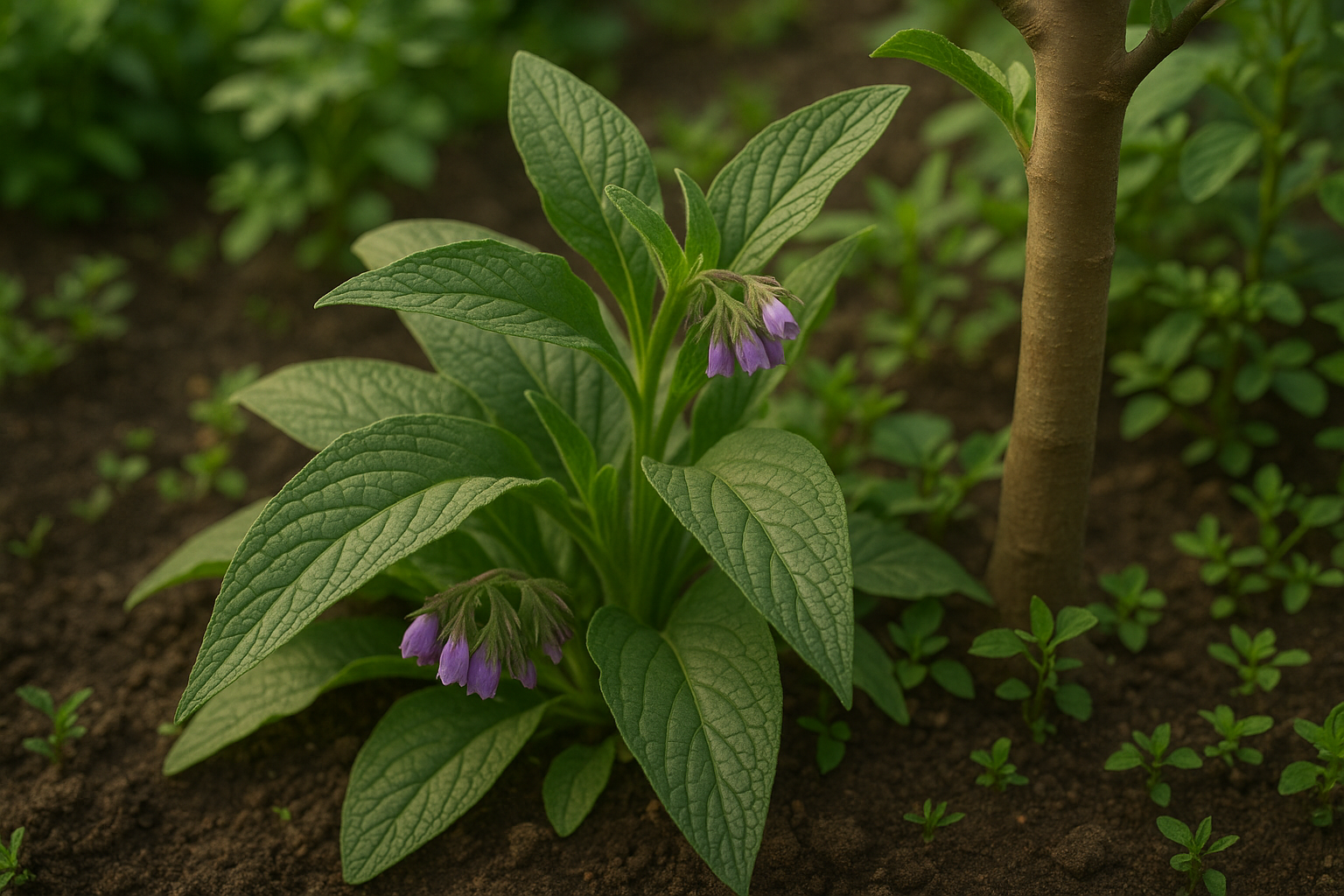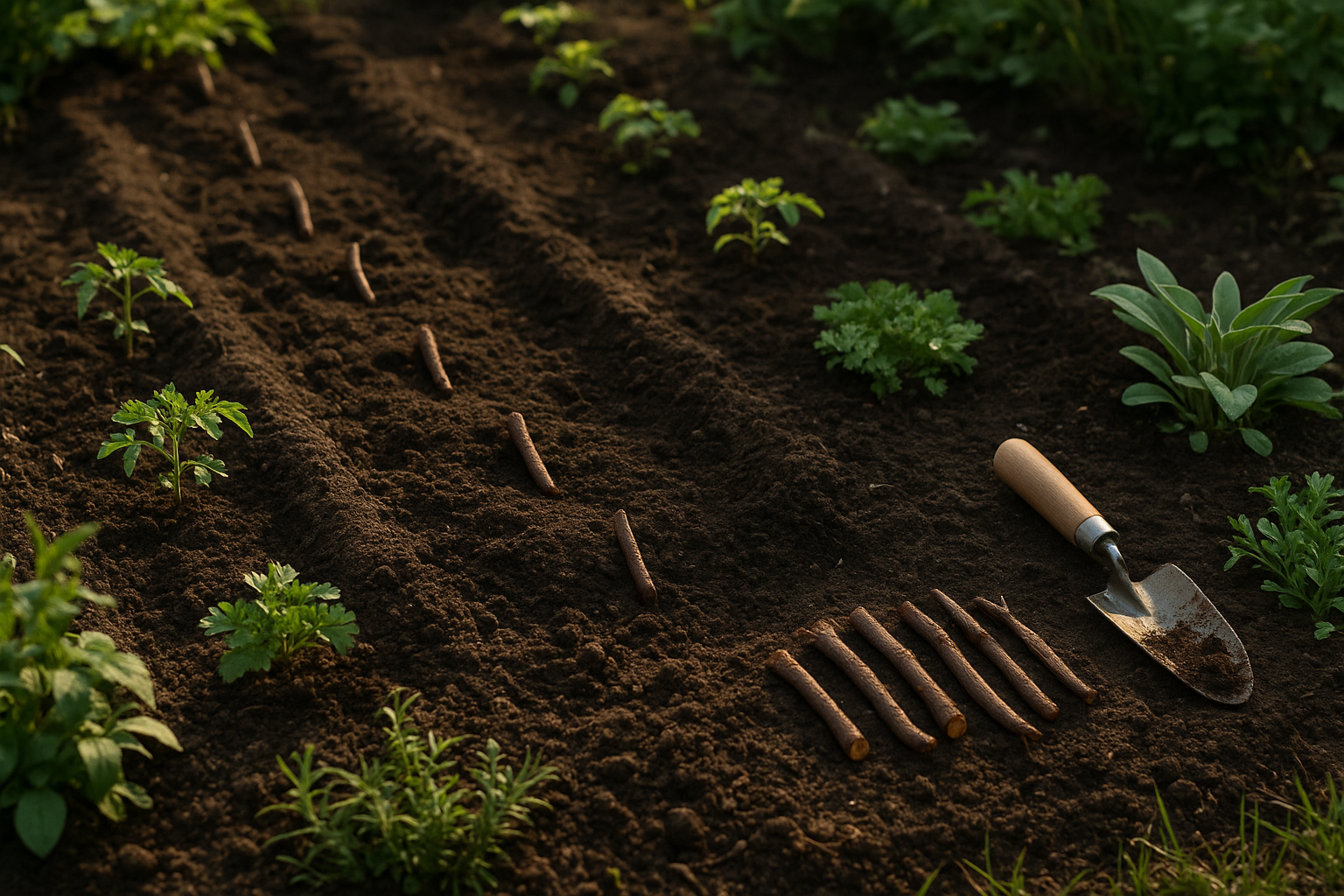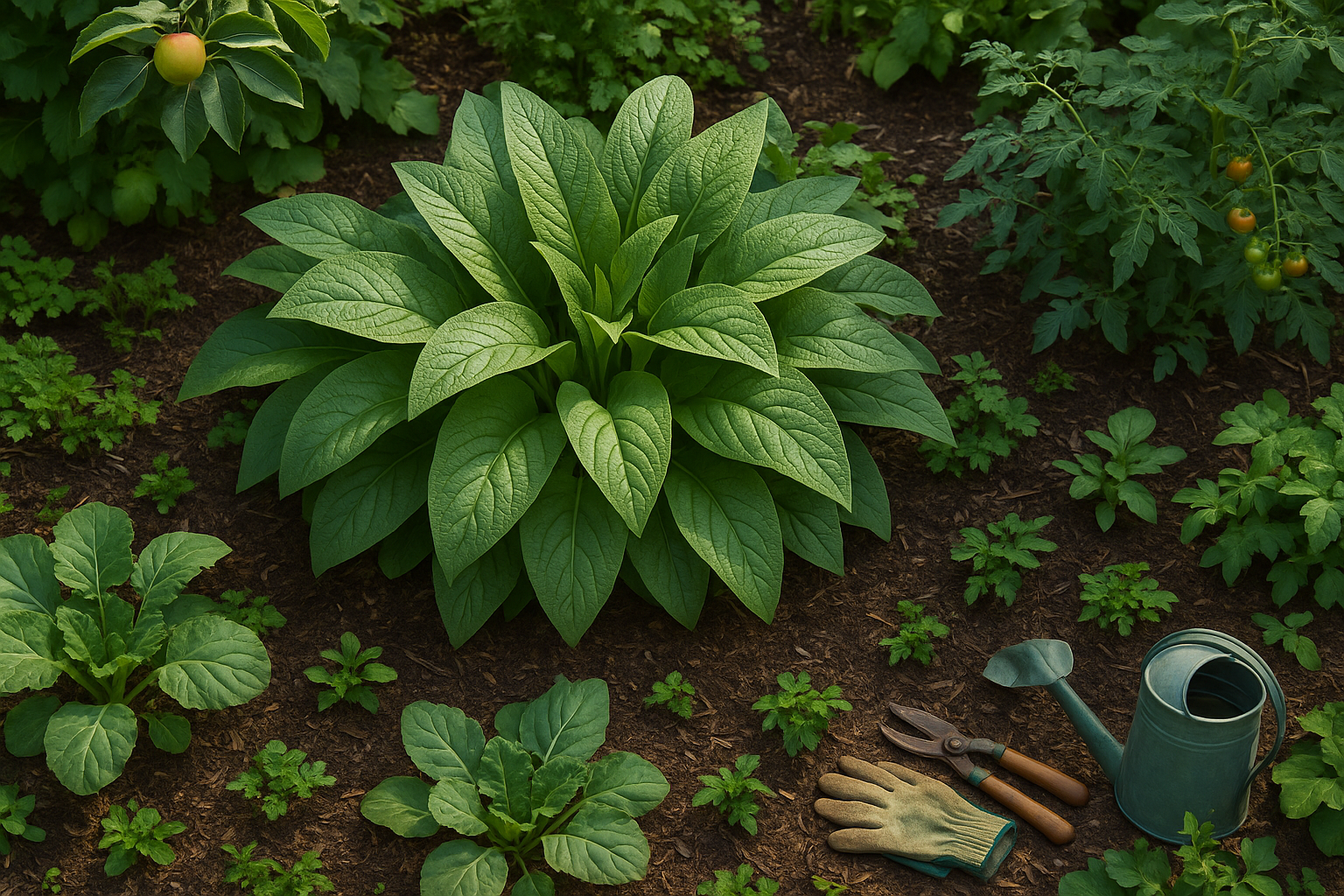Introduction to Comfrey and Companion Planting

Comfrey companion plants are becoming a popular topic among gardeners looking to maximize their garden’s potential in a natural, sustainable way. Comfrey is a hardy perennial herb known for its deep roots and nutrient-rich leaves, making it a powerhouse addition to any garden bed. Traditionally valued for its ability to accumulate minerals and break up compacted soil, comfrey also plays a helpful role when grown alongside other plants.
This is where companion planting comes into play—a traditional gardening method where different plant species are grown together to bring out the best in each other. Think of it as creating a friendly neighborhood in your garden: certain plants offer pest protection, attract beneficial insects, improve soil fertility, or even enhance the growth and flavor of their companions.
When you incorporate comfrey companion plants, you’re not just building a more beautiful garden—you’re actively boosting the health and productivity of your entire growing space. For example, planting comfrey near fruit trees can enrich the soil with nutrients like potassium, supporting strong fruit yields.
Whether you’re a seasoned organic gardener or just getting started, understanding how comfrey fits into the companion planting scheme can help your garden thrive, naturally.
Benefits of Growing Comfrey in Your Garden
Comfrey is a powerhouse plant for any garden, thanks to its remarkable ability as a dynamic accumulator. Its deep roots mine nutrients like potassium, calcium, and phosphorus from the subsoil and store them in lush, fast-growing leaves. When you chop comfrey and lay the leaves around your plants as mulch, these nutrients break down quickly, enriching the topsoil and giving your veggies and flowers a natural boost.
Many gardeners also use comfrey in their compost piles—its high nitrogen content helps speed up decomposition, so you get richer compost faster. For a homemade liquid fertilizer, simply soak comfrey leaves in water for a few weeks; the resulting “comfrey tea” is a potent, organic feed ideal for tomatoes, peppers, and other fruiting plants.
Comfrey isn’t just about soil health either—it draws in pollinators like bees with its bell-shaped, nectar-rich flowers, increasing your garden’s biodiversity. Plus, it can act as a trap crop, attracting pests like slugs away from more vulnerable veggies, or its strong scent can help deter some unwanted visitors.
By incorporating comfrey into your garden—not only as a nutrient booster but also as a mulch, compost enhancer, pollinator magnet, and natural pest manager—you support a more sustainable, thriving, and resilient growing space.
Top Companion Plants for Comfrey
Comfrey is a reliable ally in the garden, pairing well with a variety of vegetables, fruits, and herbs thanks to its impressive nutrient-accumulating abilities and its knack for improving soil structure. One excellent partner is fruit trees—apples, pears, and plums thrive when planted near comfrey. Comfrey’s deep roots mine minerals like potassium and calcium from the subsoil, making them available on the surface as its leaves decompose. This natural mulch boosts fruit yield and tree health.
Potatoes are another winning companion. Comfrey can be used as a green mulch layered around potato plants to retain moisture, suppress weeds, and feed the soil—all while potatoes benefit from the extra potassium essential for tuber growth. Tomatoes love comfrey too: plant it nearby and regularly chop-and-drop comfrey leaves to provide a steady supply of nutrients that help tomatoes thrive and fend off diseases.
Beans, being nitrogen fixers, form a dynamic partnership when grown next to comfrey. While beans enrich the soil with nitrogen, comfrey contributes phosphorus and potassium, supporting balanced plant nutrition and vigorous growth. Brassicas such as cabbage and broccoli also benefit, as comfrey foliage used as mulch deters pests like slugs and aphids with its thick, dense cover, while reducing water loss from the soil.
Herbs like basil and parsley happily share space with comfrey, taking advantage of improved soil quality and enhanced moisture retention while comfrey shades out weeds. These effective combinations work because comfrey acts like a living fertilizer factory: its foliage, when used as mulch, recycles nutrients back into the root zone, feeds hungry crops, and improves water-holding capacity—all without synthetic inputs.
By mixing comfrey into these plant partnerships, gardeners can create diverse, resilient ecosystems that foster healthier plants, require less watering, and minimize pest problems naturally. For an extra boost, try occasionally soaking comfrey leaves to create a rich liquid fertilizer (“comfrey tea”) and feed any of these companion plants directly for quick results.
Plants to Avoid Planting Near Comfrey
While comfrey is a powerful nutrient accumulator and a favorite among organic gardeners, it’s not always the best neighbor for every plant. Fast-growing and deep-rooted, comfrey can outcompete many smaller or more delicate plants for both water and nutrients.
For example, shallow-rooted vegetables like lettuce, carrots, and radishes often struggle when planted near comfrey, as comfrey’s dense foliage and rapid expansion can block sunlight and crowd them out. Additionally, some studies suggest that comfrey may exhibit mild allelopathy—a biological phenomenon where one plant releases chemicals that inhibit the growth of others—potentially stunting sensitive herbs like basil or parsley if planted too closely.
To minimize conflicts, keep at least two feet of space between comfrey and neighboring plants, especially those with shallow roots or delicate structures. Consider using comfrey on the edge of a garden bed or in a spot where its lush growth won’t shade or smother other crops. Regular pruning can also help keep its vigorous spread in check, making it easier for less competitive plants to thrive nearby.
By planning your garden layout thoughtfully, you can enjoy comfrey’s benefits without sacrificing the health of your other plants.
How to Plant and Care for Comfrey with Its Companions

Planting comfrey alongside its ideal companions can boost your garden’s productivity and improve soil health, but spacing and timing are key.
To start, plant comfrey root cuttings in early spring or fall, spacing each plant at least 2 to 3 feet apart. Comfrey grows into large, leaf-heavy clumps and needs room to thrive without crowding other plants.
For easy propagation, cut healthy roots into 2- to 6-inch sections and bury them horizontally 2 to 3 inches deep in loose, rich soil. Keep the cuttings moist until shoots emerge, usually within a few weeks.
Best Planting Practices
- Spacing: Keep comfrey plants 2 to 3 feet apart to allow ample growth.
- Timing: Plant root cuttings in early spring or fall for best results.
- Propagation: Use root sections buried horizontally in moist, rich soil.
Companion Planting Tips
Comfrey thrives near fruit trees and as a border for vegetable beds. When planting near fruit trees, place comfrey about two to three feet away from the trunk. This lets its deep taproot access nutrients without competing for surface food and water, while its dense leaves suppress weeds and provide living mulch.
Along garden borders or in vegetable beds, use comfrey as a “chop and drop” mulch. Cut back leaves several times each season and lay them around crops or add them to compost for an organic nutrient boost.
Maintenance and Care
- Water comfrey during dry spells to keep it healthy.
- Trim back leaves before flowers set to prevent aggressive self-seeding.
- Avoid planting comfrey next to shallow-rooted vegetables like carrots or onions, as it may overshadow them.
With the right spacing, timing, and placement, comfrey flourishes as a nutrient-accumulating, pollinator-friendly partner, offering ongoing benefits to fruit trees, perennials, and vegetable beds alike.
Practical Tips for Using Comfrey in the Garden
Using comfrey in your garden is an easy way to boost plant health and improve soil nutrition. To make a nutrient-rich comfrey tea, simply cut mature comfrey leaves and pack them into a bucket. Cover the leaves with water and let the mixture steep for three to four weeks, stirring occasionally until it turns dark and develops a strong odor.
Once ready, dilute the liquid at a ratio of about one part comfrey tea to ten parts water and use it as a natural fertilizer around your vegetables and flowers. For an even simpler solution, lay freshly cut comfrey leaves as mulch beneath hungry plants like tomatoes, peppers, or squash. As the leaves break down, they release potassium and other nutrients directly into the soil.
When harvesting comfrey, use sharp shears and cut leaves a few inches above ground level. Be careful not to damage nearby companion plants or disturb their roots. Always leave a few leaves intact so the comfrey plant can quickly regenerate.
After each harvest, any remaining stems or trimmings can be chopped up and dug into garden beds or tossed onto the compost pile. Their rich organic content breaks down quickly, feeding beneficial soil microbes. By repeating this cycle once or twice each growing season, you continuously recycle valuable nutrients on-site, improving soil health and supporting robust growth throughout your garden year after year.
Conclusion
Comfrey is a powerhouse companion plant that enriches soil, supports pollinators, and naturally helps manage pests. By pairing comfrey with vegetables, fruit trees, or herbs, you can boost growth, reduce fertilizer needs, and promote a healthier garden ecosystem.
Its deep roots draw up nutrients, while its lush leaves provide excellent mulch. Experimenting with comfrey alongside favorites like tomatoes, potatoes, or apple trees can reveal surprising benefits—many gardeners report stronger plants and fewer weeds.
Incorporate comfrey into your planting schemes and see firsthand how this versatile herb can transform your garden into a more vibrant, sustainable space.
